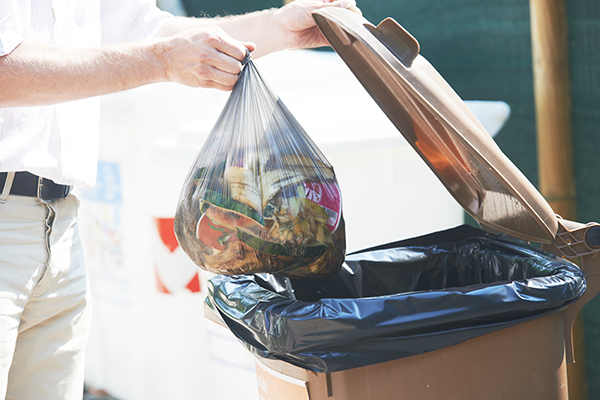Crafting Effective SOPs to Serve as your Food Safety Foundation
As I was writing my last blog, I realized I referenced standard operating procedures (SOPs), assuming that every foodservice operation has them. I know that most chain operations have them, but I suspect that several independent operations may not have a set of SOPs developed for their operations. Because of my suspicion, I made a few calls to friends I know who manage independent operations to find out if I was correct or not. While I only called a handful of operators, I discovered that about 50% of those whom I called did not have SOPs in their operation. Thus, I thought I might focus my blog this week on where to start in crafting effective SOPs for your operation.
Food safety is a top priority in any foodservice operation, and you must agree, otherwise you would not be reading this blog right now. Having clear, structured processes in place is essential for maintaining high standards. Good SOPs are one of the most effective ways to ensure food safety is consistently upheld.
SOPs are detailed, written instructions that guide employees in performing tasks correctly and safely. For foodservice operations, they help minimize risks like contamination, foodborne illness, and improper handling.
Before creating your SOPs, it’s important to understand the key food safety regulations and guidelines that apply to your operation. These regulations will vary by location but generally cover aspects like safe food handling, storage, temperature control, and hygiene. Familiarize yourself with local health codes and national standards, such as those set by the FDA Food Code or ServSafe, to ensure compliance.
Identify the critical food safety processes within your operation – and each operation will be different. Are you an assembly-serve foodservice with minimal cooking on-site or are you a fine dining operation where everything is made from scratch? Regardless of the type of production system you use, there are SOPs that you will need and determining these processes is a vital first step. These are the areas where errors or lapses in procedures can result in foodborne illnesses, contamination, or safety hazards. These high-risk areas are where SOPs will make the biggest impact.
Some critical processes to focus on:
Once you’ve identified the key processes and risks, it’s time to develop detailed SOPs that cover each of these identified areas. Each procedure should be simple, clear, and easy to follow, leaving no room for ambiguity.
…the areas where errors or lapses in procedures can result in foodborne illnesses [and] these high-risk areas are where SOPs will make the biggest impact.
Each SOP should include a detailed, step-by-step description of the task, from start to finish. Be specific about what needs to be done and who is responsible for each step. For example, if the SOP is about proper handwashing, it should detail the steps of handwashing, how long it should take, and when employees should wash their hands (for example, before handling food, after touching raw meat, when returning to the kitchen, etc.).
Within the SOP, be sure to list any tools, equipment, or supplies needed to complete each task safely. For example, if an SOP involves using a food thermometer, specify the types of thermometers to use and how to calibrate them. Many food safety procedures require ongoing monitoring (e.g., temperature checks, cleaning schedules). Clearly define how often these checks should occur and who is responsible for them.
If your head is spinning with all the work this will take, there are some tools that could help. Two of my favorites are the Iowa State University SOP documents and The Institute of Child Nutrition SOP documents. Both are available free of charge. These are great places to start, but be sure to adapt them to your operation and your local food safety regulations.
SOPs are only effective if your staff understands and follows them. Regular training is essential to ensure that employees are familiar with food safety procedures and know how to apply them in their day-to-day tasks.
It is also important to remember that once you have your SOPs established, food safety guidelines, regulations, and industry best practices can change over time. It’s important to periodically review your SOPs to ensure they remain up to date and compliant with the latest food safety standards. Risk Nothing.
READ MORE POSTS
Getting Your Playbook for Food Safety Organized
As anyone who has ever worked in a foodservice operation knows, from the time food is received in your establishment to the time it is served to your customers, following proper food safety practices is crucial. What many don’t often think about is this time really should extend from the time the manager places their orders with their suppliers (including which purveyors you utilize), through the time the food is consumed – even if that consumption occurs off your premises and days after the original order was picked up by the guest. This is something that has certainly been highlighted by the pandemic as customers across the nation are utilizing take-out, curbside to go, and third-party delivery options more so now than ever before.
Getting Started with Building the Infrastructure
Hopefully in our first January blog, we convinced you of the importance of establishing an infrastructure within your operation to support a safe food culture. So, how does one go about doing this? Well, like any major project, break it into small bites. In our opinion, having a written guide for employees that documents expectations related to food safety basics of employee health and hygiene, temperature controls, and cleaning and sanitizing is the first step. Having this documentation serves as a reference for training and helps fulfill the mission of most foodservice operators which is to serve safe, quality food.
Food Safety Resolutions for the New Year
Finally, 2020 is in our rearview mirror and we can all turn the page to 2021! Resolutions for the new year might be more of the same from prior years (lose weight, exercise more, less screen time, etc.) OR you may have identified new practices to implement in your operation. If the latter, likely goals included some practices related to food safety – especially given the turmoil of 2020 and heightened concern by customers. It is our philosophy that attention to safe food handling practices is a win-win for any operation because of the direct relationship between food safety and food quality, which in turn leads to customer satisfaction. This past year has also demonstrated that attention to safety can affect the bottom line. Thus, the topic of our first SafeBites webinar for 2021 is on the topic of the return on investment of food safety, it is scheduled for January 20, so register now and please plan to attend.
To Toss or Not to Toss? That is the question.
Our first blog for the month emphasized the basic safe food practices needed to keep you and your guests healthy (and happy!), especially during these times of COVID. The impact of foodborne illness can range from an uncomfortable few days to hospitalization or death. Foodborne illness IS preventable and the steps taken to keep food safe also maintain quality of food, and ultimately profitability. Think of attention to food safety as part of quality control and a win-win business strategy. Knowledge about food safety can be helpful when controlling costs as making wise decisions when determining the fate of unserved food can affect the bottom line.










